06 Jan

Grammarly is a writing assistant. According to our data, its website gets an estimated 22.2M monthly search visits across 2,468 published pages.
If Grammarly bought this same traffic via Google Ads, it would cost an estimated $5.1M per month.
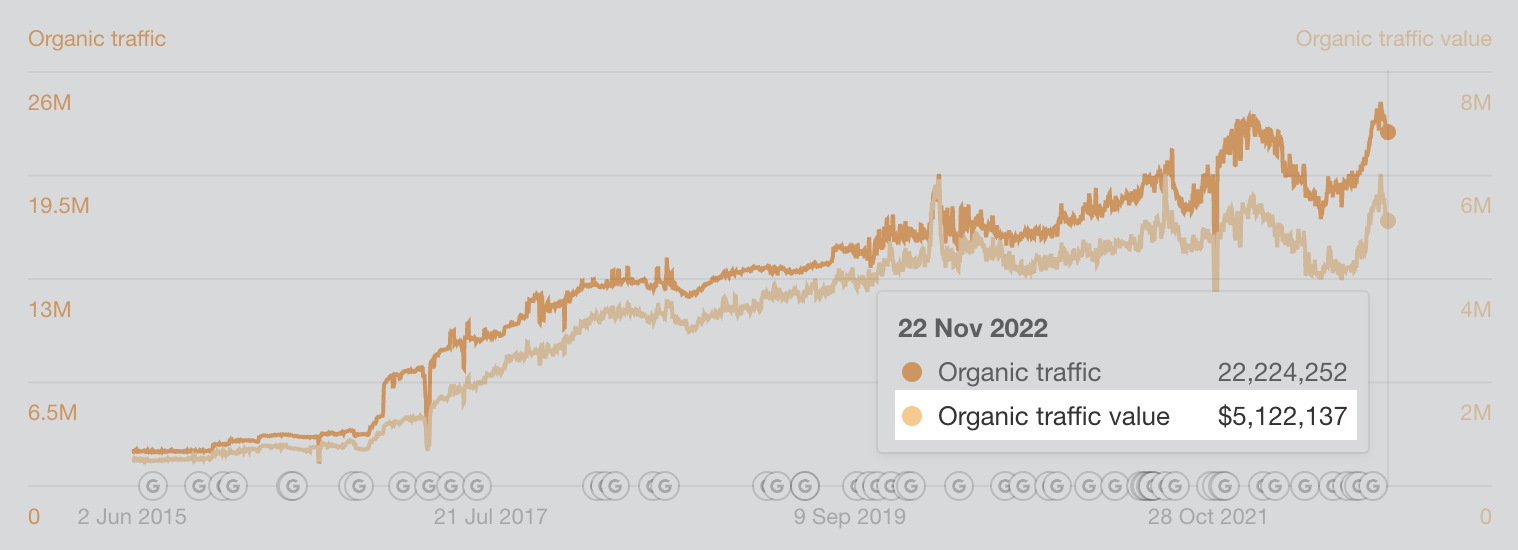
In this post, I’ll share 11 takeaways from my deep dive into the company’s SEO strategy.
Grammarly gets an estimated 7.8M monthly search visits from search queries containing the phrase “grammarly.” That’s 38.6% of its total organic traffic.
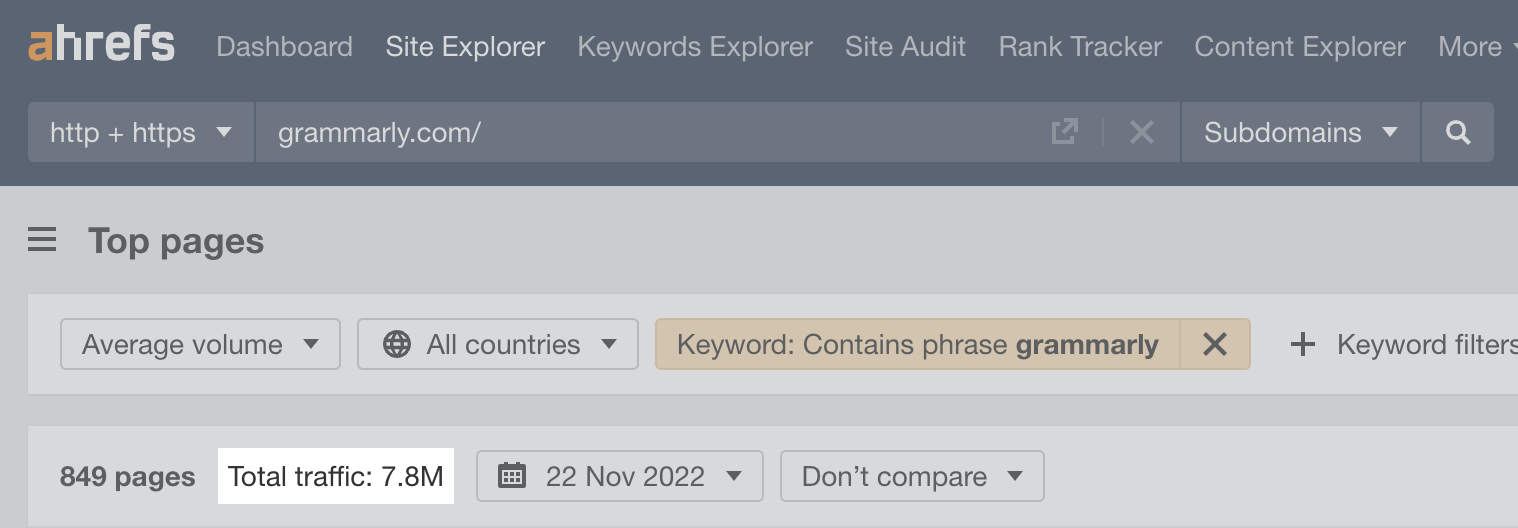
Ironically, however, it gets at least a further 590K monthly searches for keywords containing brand misspellings.
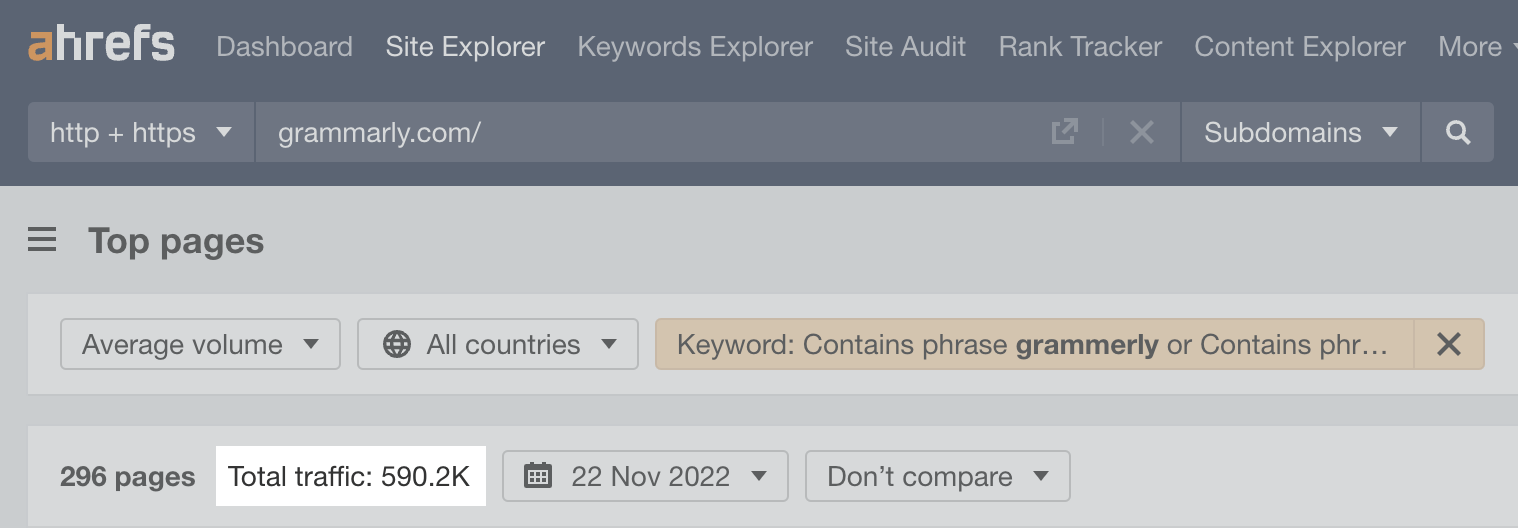
Given that it has 30M daily users (by its own estimates), this is hardly surprising. In fact, there are over 37K queries in our U.S. keyword database containing “grammarly” with a total estimated monthly search volume of 3.1M.
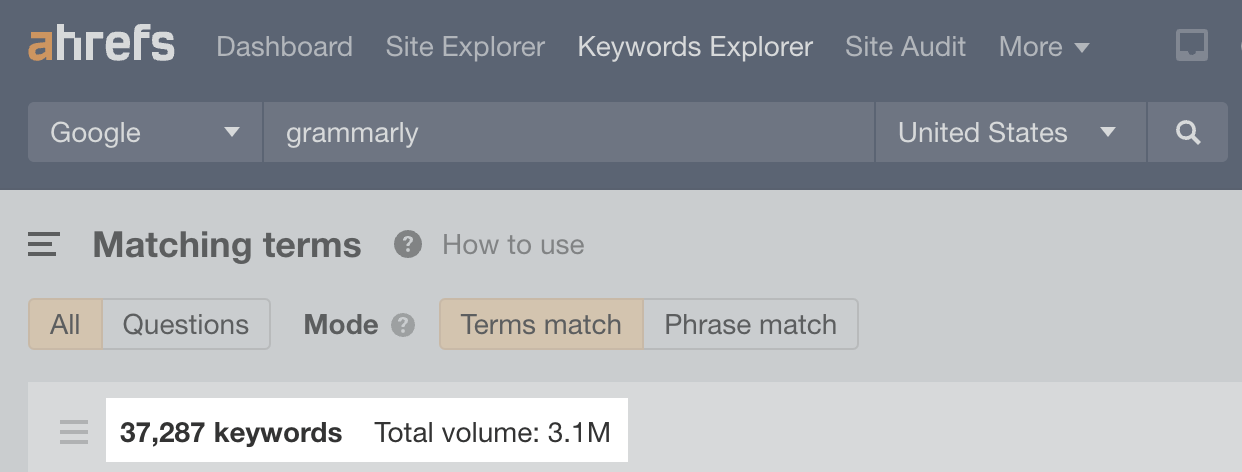
Grammarly’s homepage gets an estimated 6.6M monthly search visits—almost a third of its total traffic.
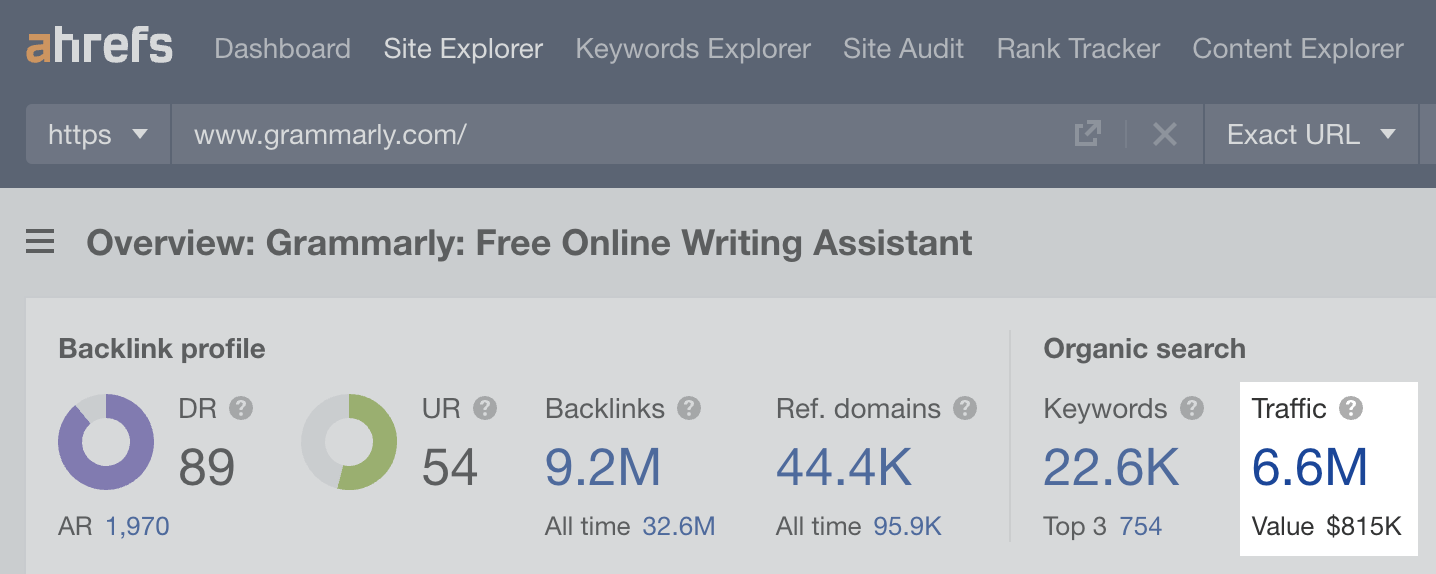
Despite the company seemingly making some effort to target the keyword “writing assistant” on its homepage (it’s in the page’s title tag), almost all of its traffic is branded.

In fact, its homepage is responsible for 84.6% of all its branded traffic.
Just 277 of Grammarly’s 2,468 pages attract the bulk of its organic search traffic—20.1M monthly visits.
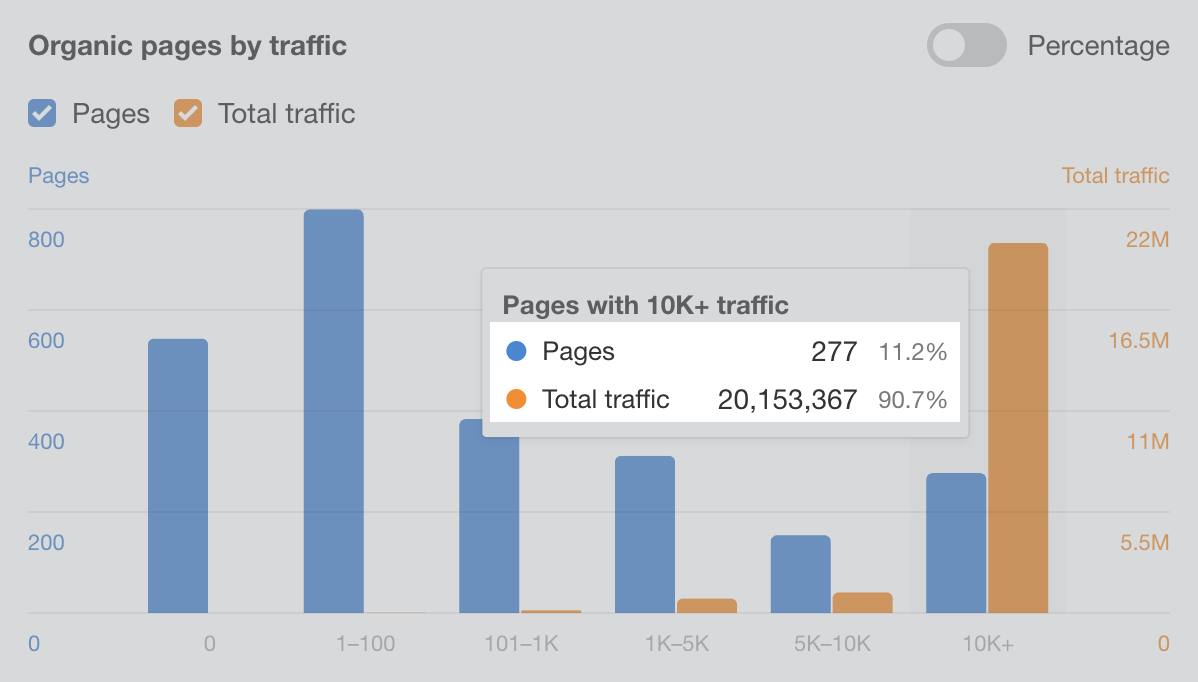
This traffic goes to a mix of free tools, blog posts, and its homepage.
Grammarly is far from the odd one out here. You’ll see a similar distribution for most websites, thanks to the Pareto principle (80/20 rule).
543 of Grammarly’s 2,468 pages get no organic traffic.
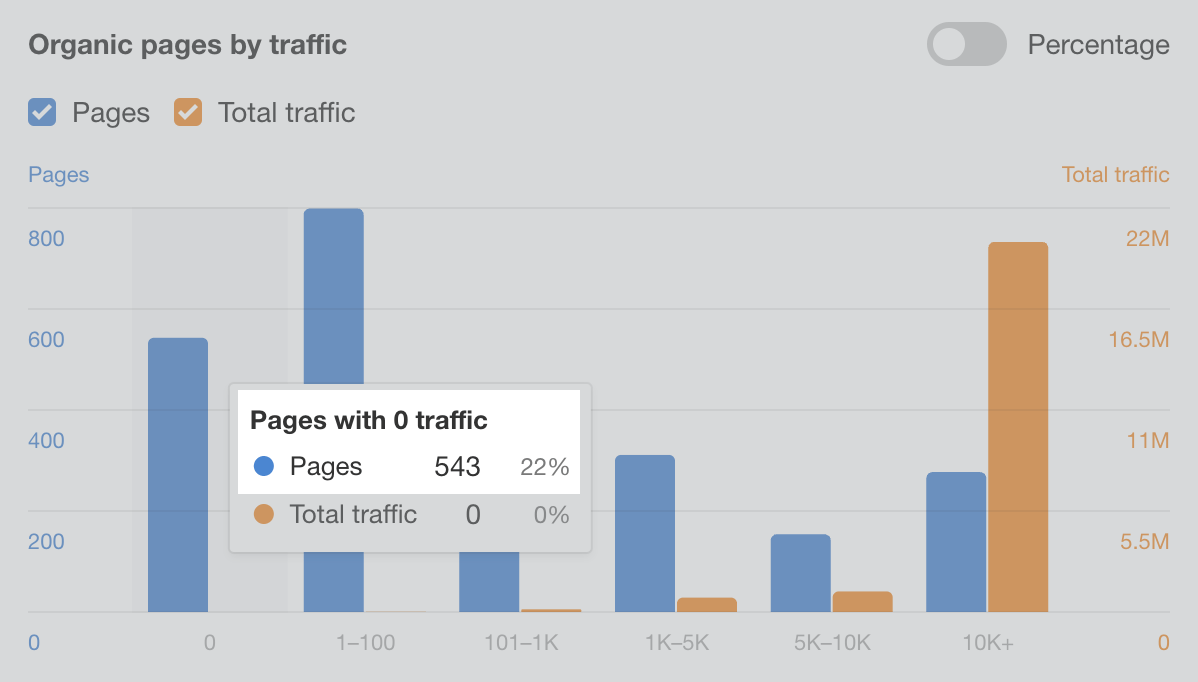
Here’s a quick breakdown of these pages:
- 360 blog posts
- 76 jobs pages
- 77 support articles
- 12 developer/API pages
- 12 PDFs
- 6 other
Blog posts aside, none of the other pages appear to have been created with attracting search traffic in mind. So it’s hardly surprising that they get none.
In fact, this is the case for some of the blog posts too.
For example, there are 48 posts with no traffic under the /business/ subfolder.
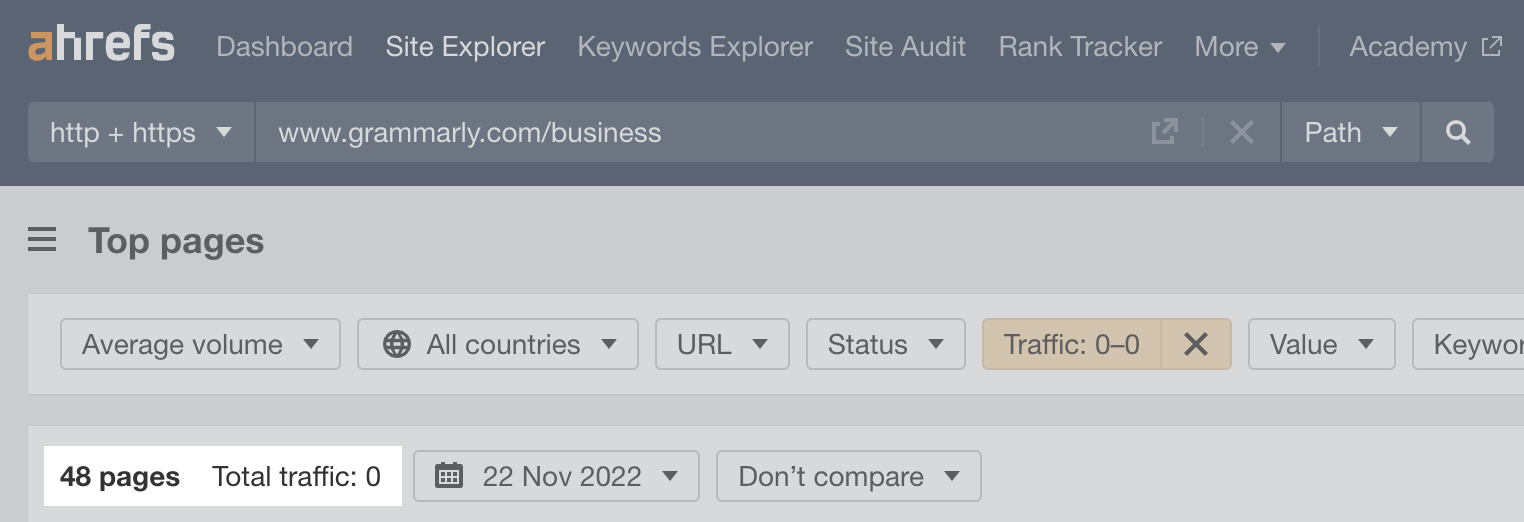
Most of these seem to be more thought leadership–type content than search-focused pieces.

Grammarly has seven free tools that cumulatively get over 3M estimated monthly search visits.
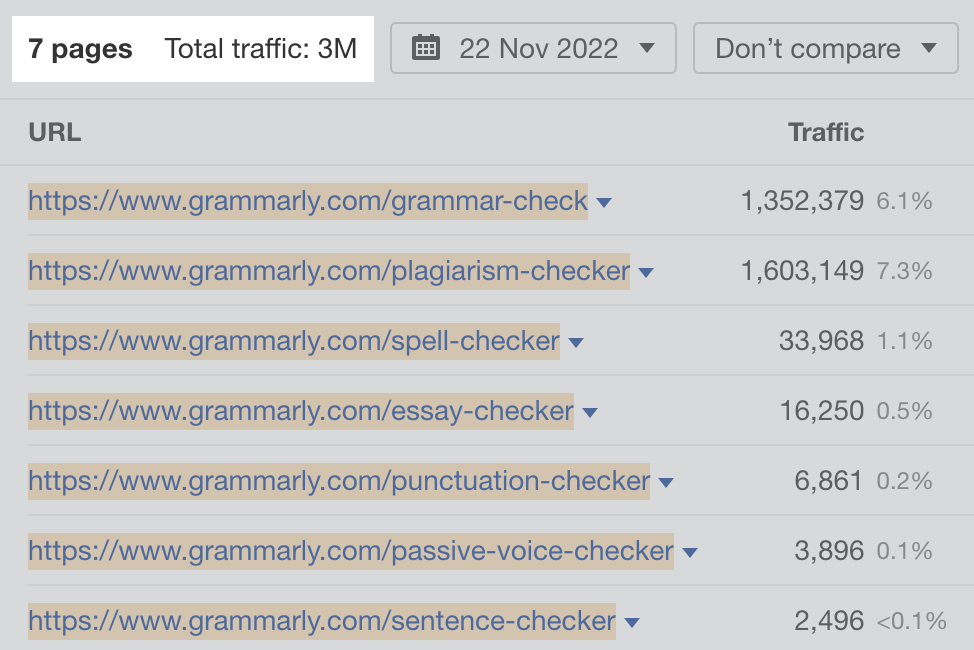
However, almost all traffic goes to just two of these tools: its grammar checker and plagiarism checker.
Interestingly, 77.4% of this traffic is non-branded. It comes from keywords like “grammar checker,” “plagiarism checker,” “spell checker,” and “punctuation checker”—all of which get tens of thousands of estimated monthly searches.

Do you want to use this SEO tactic for your website?
- Go to Keywords Explorer
- Enter a few “seed” terms related to your industry
- Go to the Matching terms report
- Add words and phrases like tool, tools, calculator, checker, and generator to the “Include” filter
- Select “Any word” on the “Include” filter
- Click “Apply”
For example, if you sell accounting software, you might enter seeds like “tax” and “salary.”
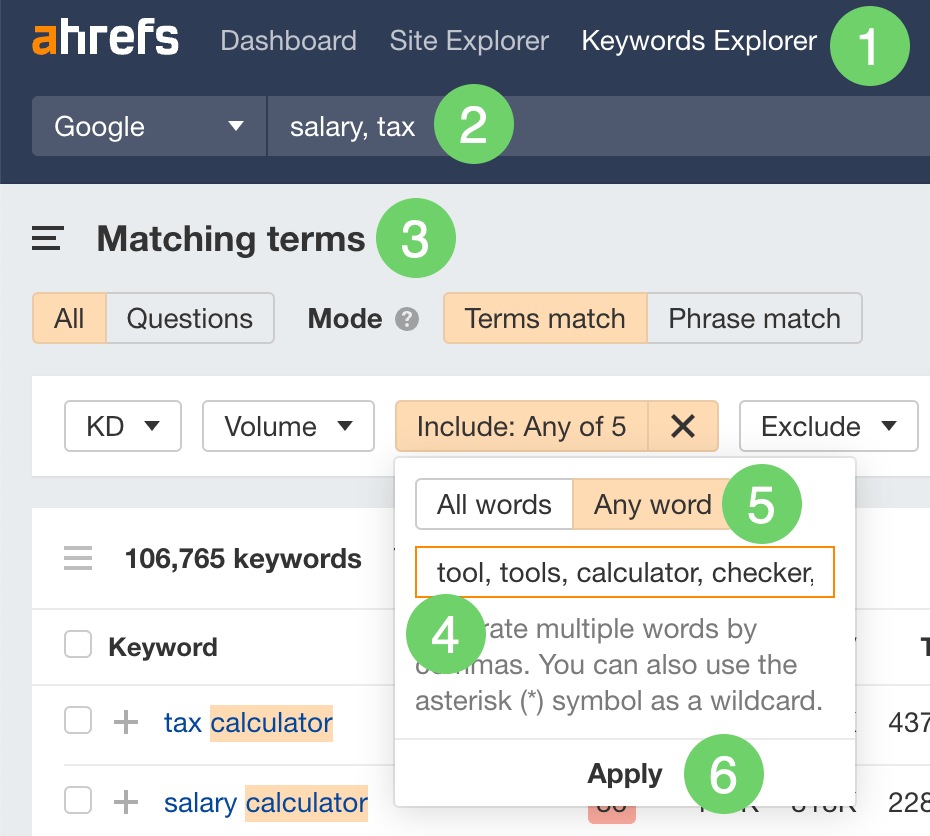
Grammarly is committed to blogging. 1,699 of its 2,468 (69%) pages are blog posts, which attract more than half (~11.2M) of its estimated search traffic.
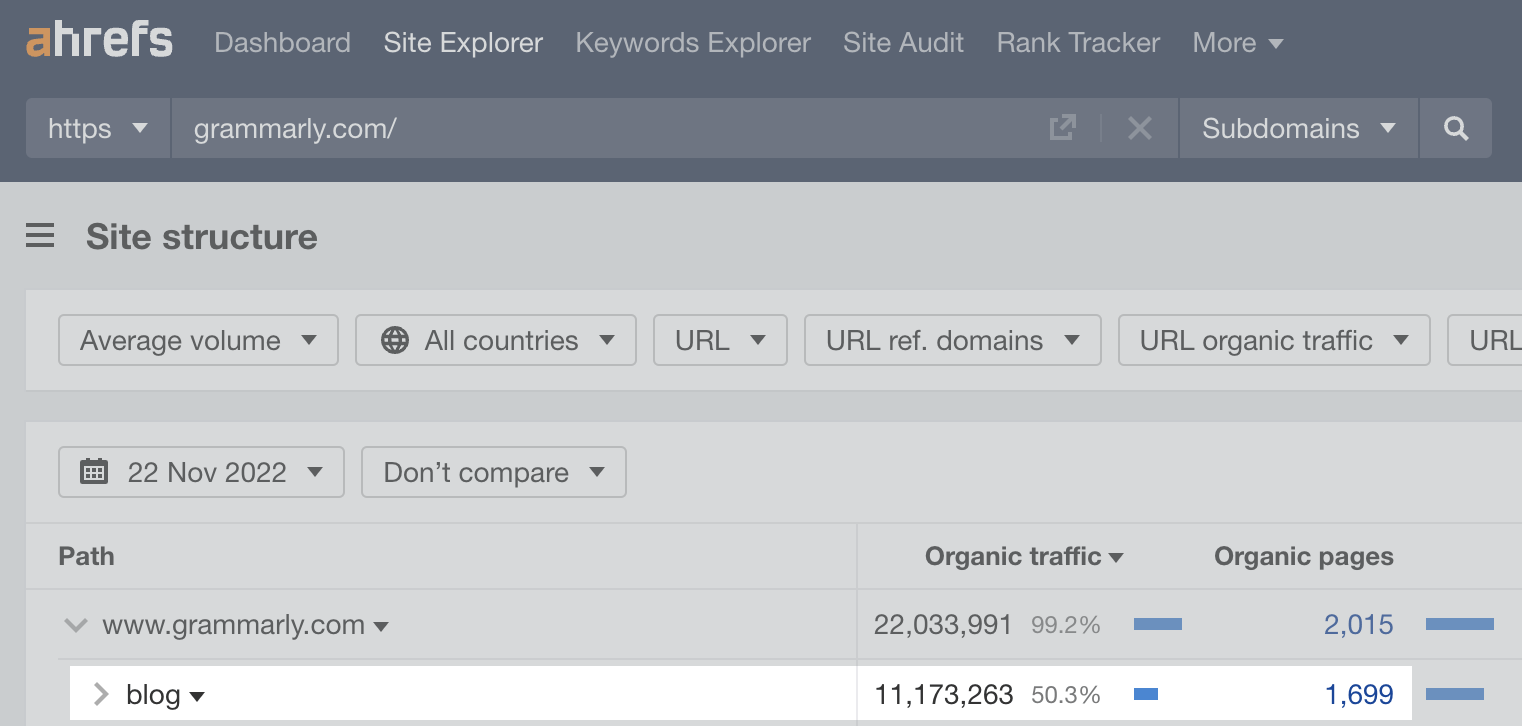
Most of these pages (81.6%) get at least some search traffic, so it’s clear that Grammarly takes a search-focused approach to blogging.
In terms of what the posts cover, they’re mainly about grammatical terms like verbs, nouns, etc.

Most of these terms get tons of monthly searches, and Grammarly ranks #1 for many of them—hence why its blog gets so much search traffic.
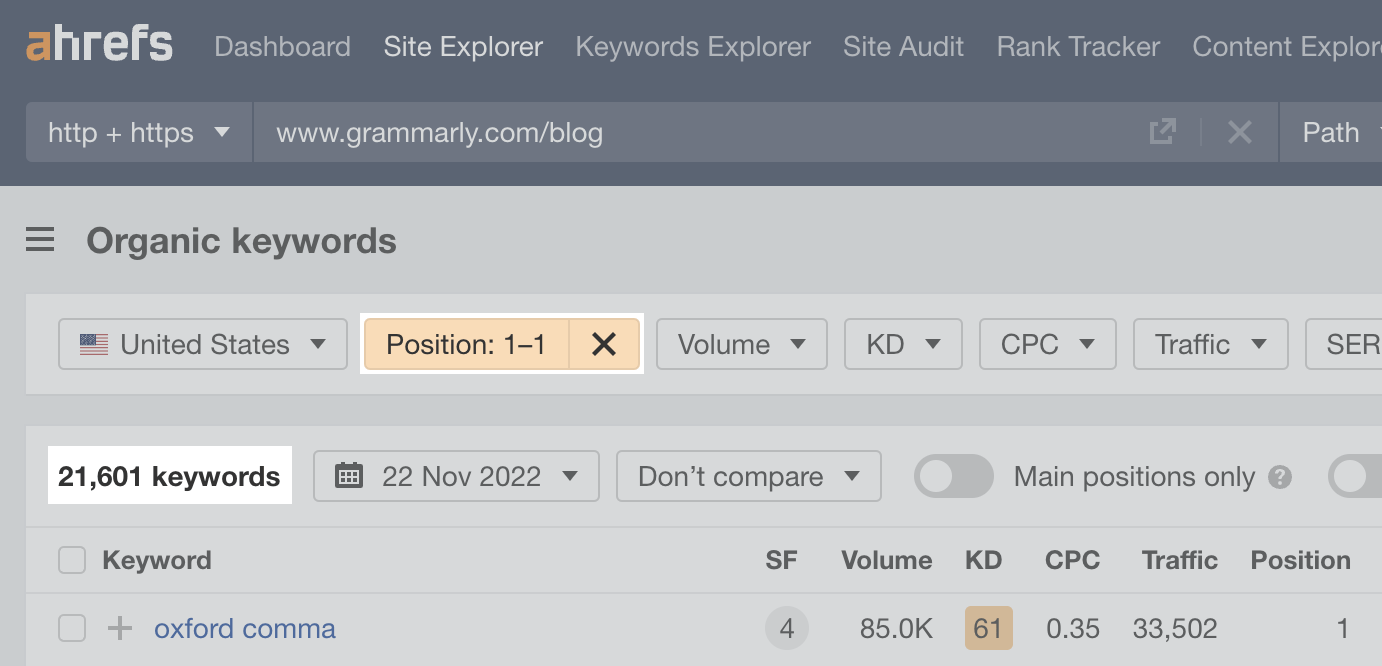
Just 256 of Grammarly’s 1,699 blog posts get ~9.4M monthly organic search visits—almost all of its blog’s total traffic.
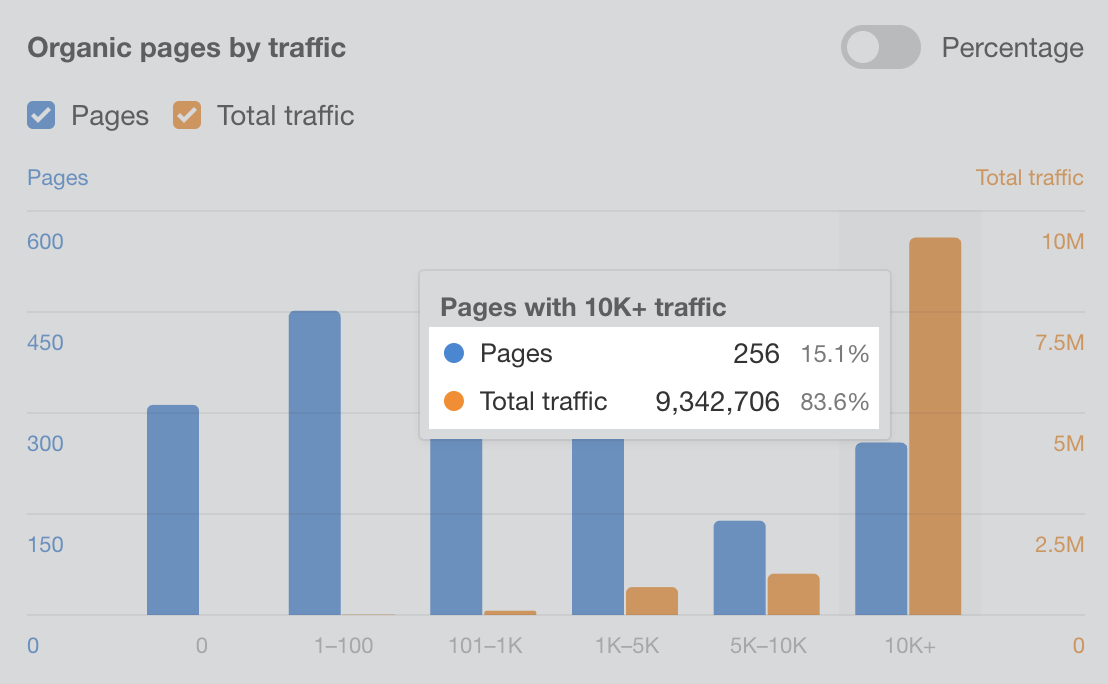
Once again, this distribution isn’t abnormal. It’s actually even more extreme on our blog, with 6.7% of our posts attracting 77.9% of our blog traffic.
However, we get nowhere near the amount of organic search traffic Grammarly gets.
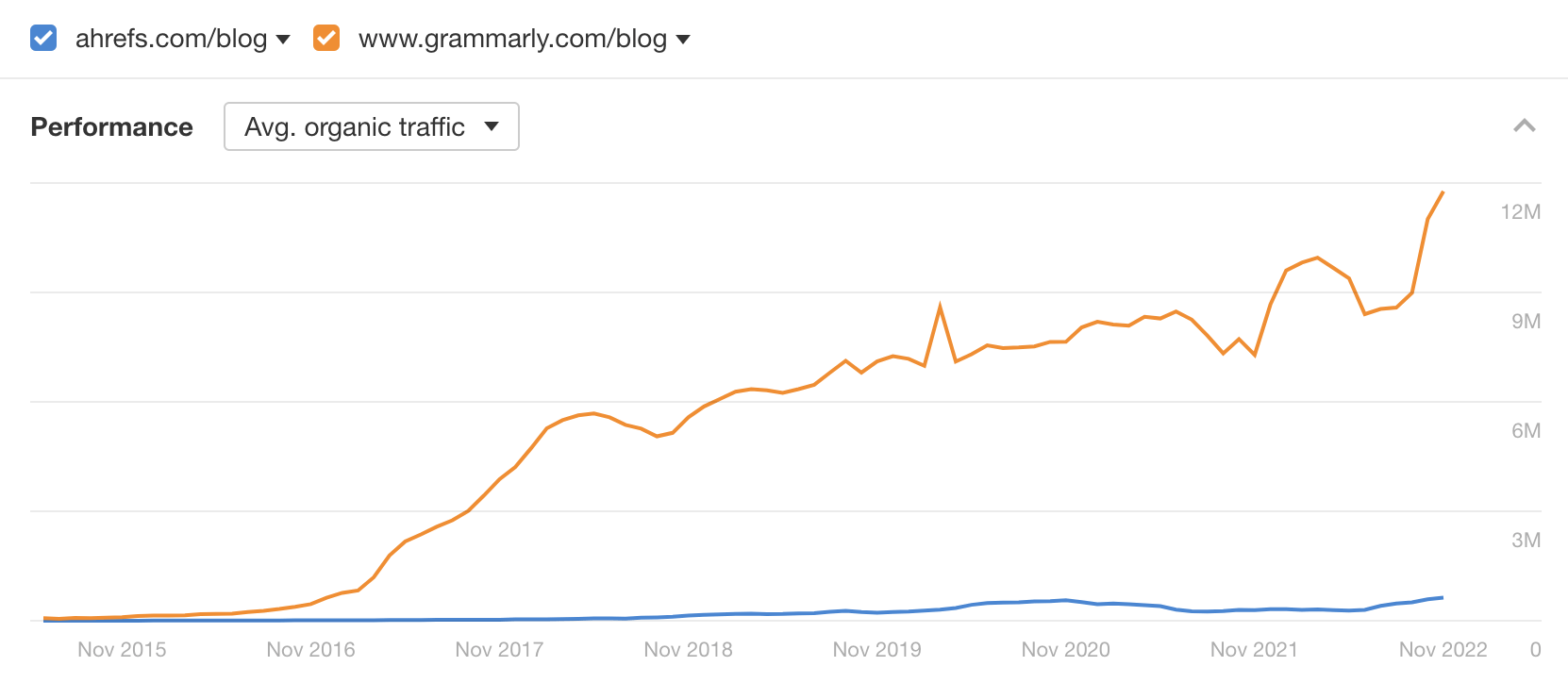
This is partly because the terms Grammarly targets (and ranks for) are super popular.
For example, there are an estimated 151K monthly searches for “em dash” in the U.S. Grammarly currently ranks #6.

Grammarly has been blogging for a while. It published its first blog post on June 22, 2012.

If we plug that post’s URL into Ahrefs’ Content Explorer, we see that it probably didn’t take much effort to write, as it’s only 304 words long. Yet it still attracts hundreds of monthly organic visits to this day.

However, this is far from one of Grammarly’s top-performing posts.
If we look at posts getting 10K monthly search visits or more, only 24.2% of them were published in the last two years (since November 2020). Most of them were published in 2016 or 2017.
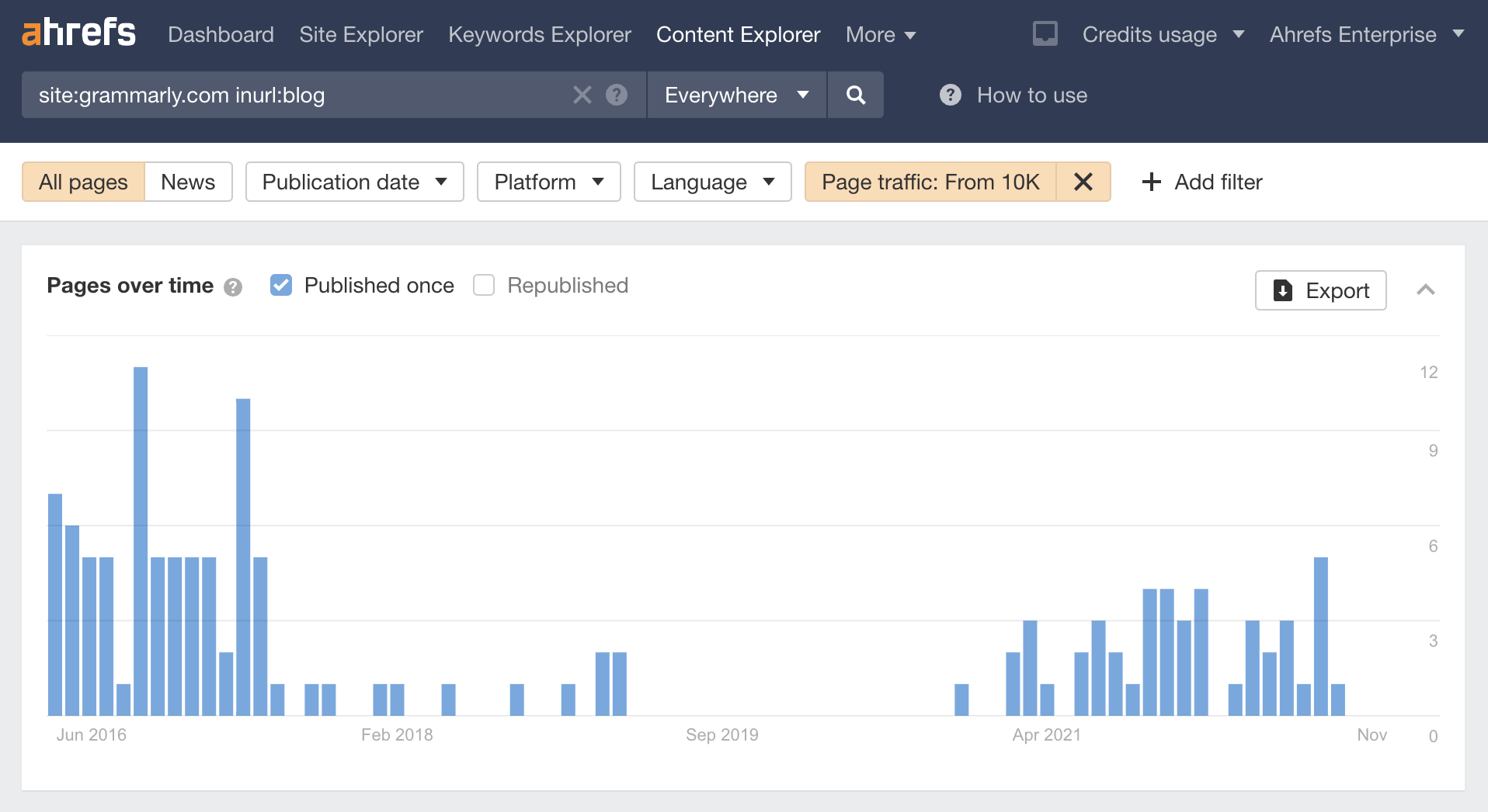
This just goes to show that SEO is not an overnight strategy. It can take years to experience the full benefit of a solid SEO strategy.
Most of Grammarly’s top-performing posts have been updated in the last few months.
For example, its post about contractions in writing was initially published in June 2016. But it updated and republished the post in August 2022.

If we search for Grammarly’s blog in Content Explorer, the “Pages over time” graph shows how its publishing and republishing strategy has changed over time.
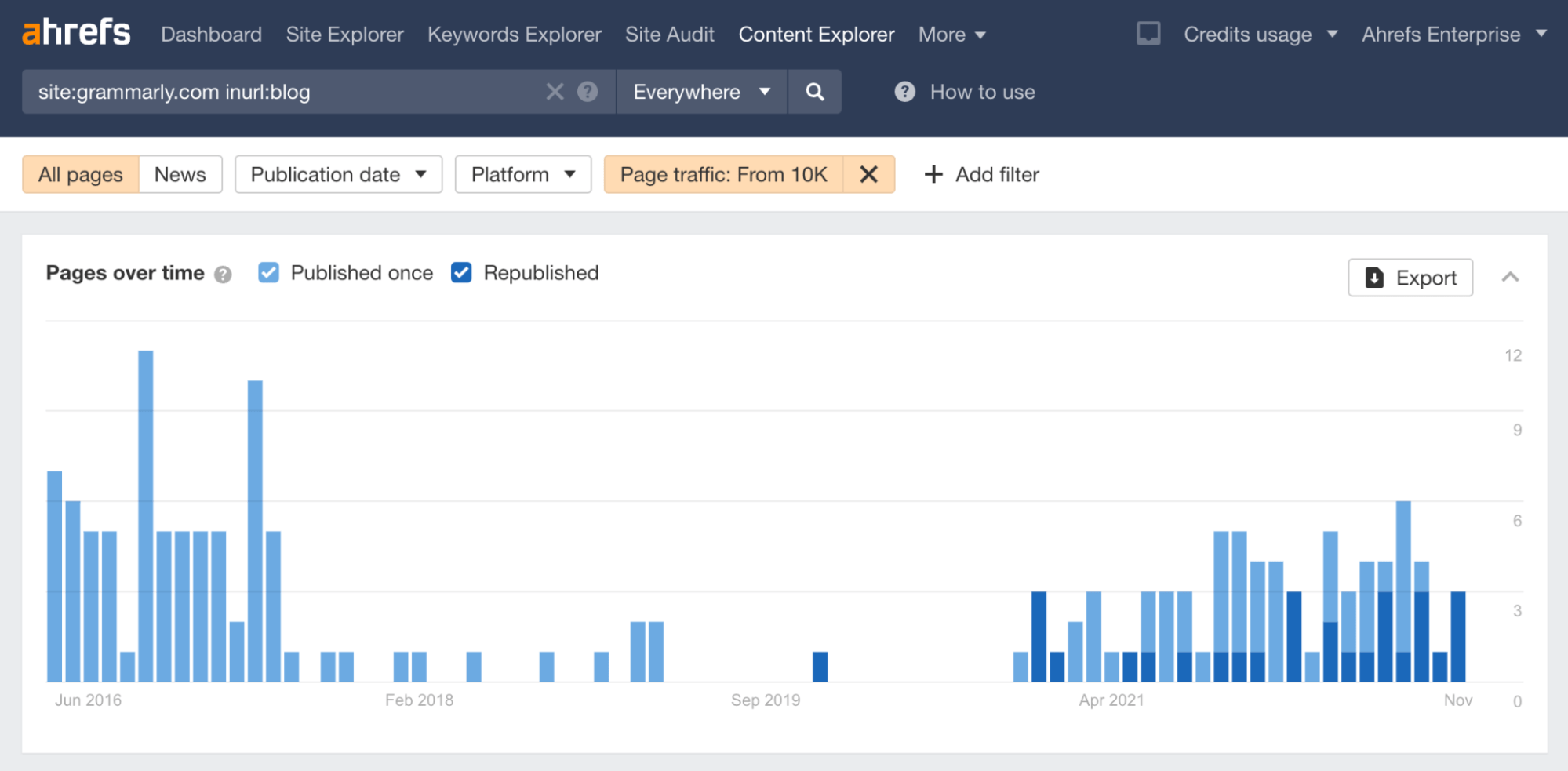
Between June 2016 and June 2017, it published 529 new posts but didn’t republish a single post. Compare that with the period from June 2021 to June 2022 when it published 185 posts and republished 29 (13.5% of all posts during the period).
Many of these updates have had an incredible impact on search traffic too.
For example, it republished its post about participles in July 2022. Shortly after, organic search traffic shot up from ~1.5K to ~16K per month.

Grammarly’s support subdomain only gets around 0.7% of the company’s total organic search traffic. But this is quite impressive when you consider how little content there is.
Right now, according to the Site structure report in Site Explorer, it has 399 pages.
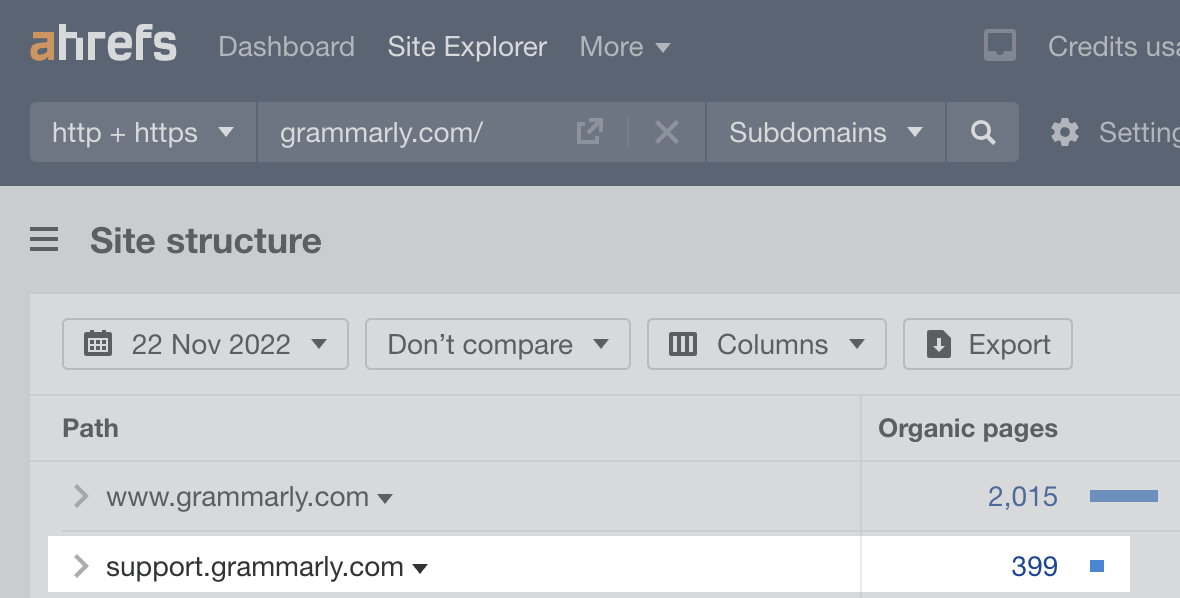
But the impressive part is that it took minimal effort to get this traffic, as much of this content is super short.
For example, according to Content Explorer, the top-performing support page gets an estimated 26.8K monthly visits despite being just 77 words long.

In fact, 76.5% of the support section’s organic search traffic comes from just 20 articles comprising 4,023 words in total.
Pretty much all this traffic comes from branded search (e.g., “add grammarly to word”). But that’s to be expected, as content on this subdomain answers questions about the tool.
Grammarly has recently started creating short introductory guides to topics that link to related blog posts, otherwise known as content hubs.
Here are the four “hub” pages it currently has:
It seems to be working well so far. Most of these pages are already attracting a few thousand organic search visits per month.
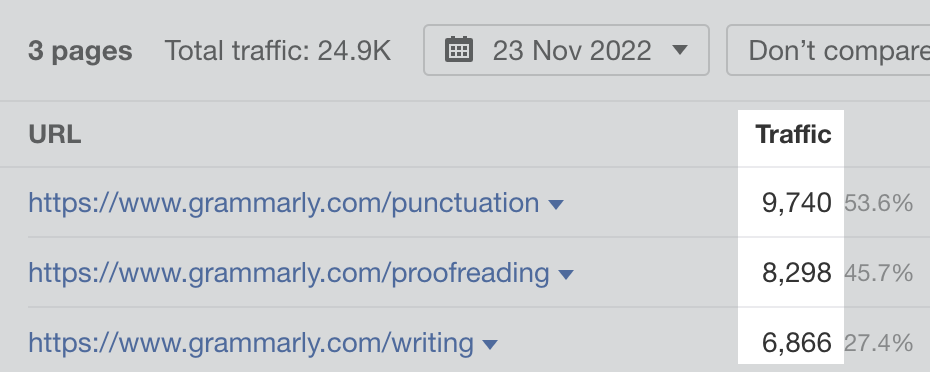
Final thoughts
Grammarly’s search performance has been on an upward trajectory for years, and there’s a lot to learn from it. It will be interesting to see where its SEO team goes from here.
Got questions? Ping me on Twitter.
Source: ahrefs.com, originally published on 2023-01-05 23:54:38
Connect with B2 Web Studios
Get B2 news, tips and the latest trends on web, mobile and digital marketing
- Appleton/Green Bay (HQ): (920) 358-0305
- Las Vegas, NV (Satellite): (702) 659-7809
- Email Us: [email protected]

© Copyright 2002 – 2022 B2 Web Studios, a division of B2 Computing LLC. All rights reserved. All logos trademarks of their respective owners. Privacy Policy

![How to Successfully Use Social Media: A Small Business Guide for Beginners [Infographic]](https://b2webstudios.com/storage/2023/02/How-to-Successfully-Use-Social-Media-A-Small-Business-Guide-85x70.jpg)



![How to Successfully Use Social Media: A Small Business Guide for Beginners [Infographic]](https://b2webstudios.com/storage/2023/02/How-to-Successfully-Use-Social-Media-A-Small-Business-Guide-300x169.jpg)


Recent Comments